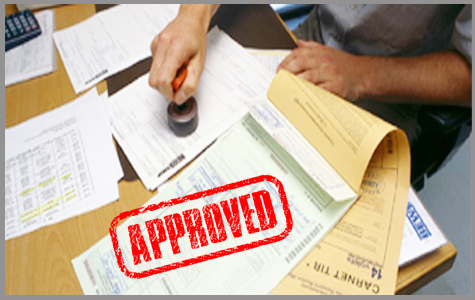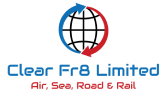Import bicycles and bicycles parts to the UK
Clear Fr8 Limited are able to assist with all bicycle imports to the UK.
Importing Bicycles and Bicycle Parts into the UK
Introduction
The UK is a nation of cyclists, with millions of people using bicycles for commuting, leisure, and sport. With such a high demand for bicycles, it is no surprise that many bicycles and bicycle parts are imported into the UK each year. However, the process of importing these goods can be complex and there are a number of factors that need to be considered.
This guide will provide an overview of the process of importing bicycles and bicycle parts into the UK. It will cover everything from customs duty and VAT to product safety requirements and labelling.
How to Import bicycles and bike parts
The United Kingdom, with its diverse landscapes and growing focus on sustainable transportation, presents a lucrative market for bicycle imports. However, importing bicycles into the UK requires understanding and adhering to specific regulations and procedures. This article aims to guide importers through the essential steps and considerations for a successful import process.
1. Understanding UK Bicycle Import Regulations
-
Safety Standards: Bicycles imported into the UK must meet specific safety standards. These include frame and fork strength, braking system efficiency, and the presence of necessary reflectors and lights. Compliance with British Standard BS EN 14764 is often required.
-
Labeling Requirements: Bicycles should be properly labeled with information such as the manufacturer's name, the country of origin, and any applicable safety standard markings.
2. Import Duties and Taxes
-
VAT and Customs Duties: Importers must be aware of the Value Added Tax (VAT) and any customs duties that may apply to bicycle imports. The rates can vary, and it's advisable to consult the latest guidelines from HM Revenue and Customs (HMRC).
-
EORI Number: An Economic Operators Registration and Identification (EORI) number is necessary for businesses importing goods into the UK.
3. Shipping and Logistics
-
Choosing a Shipping Method: Options include sea freight, air freight, and road transport. The choice depends on factors like cost, volume, and urgency.
-
Packaging for Safety: Proper packaging is crucial to protect bicycles during transit. This includes secure boxing and padding to prevent damage.
4. Post-Brexit Considerations
-
Regulatory Changes: Following Brexit, the UK may implement new or altered regulations affecting imports. Staying updated on these changes is crucial for compliance.
-
UKCA Marking: For certain products, the UKCA (UK Conformity Assessed) marking is required. While bicycles are not currently on this list, importers should stay informed about any future requirements.
5. Ethical and Environmental Considerations
-
Sustainable Practices: Importers should consider the environmental impact of their operations, including the carbon footprint of transportation and the sustainability of manufacturing processes.
-
Ethical Sourcing: Ensuring that bicycles are sourced from manufacturers that adhere to ethical labor practices is increasingly important for UK consumers.
Importing bicycles into the UK can be a rewarding venture, but it demands careful planning and adherence to regulations. By staying informed about safety standards, import duties, and logistical considerations, importers can successfully navigate the process and contribute to the UK's thriving bicycle market.
Customs Duty and VAT
When importing goods from outside the UK, you will be liable to pay customs duty and VAT. Customs duty is a tax on the value of the goods, while VAT is a tax on the goods and customs duty. The rate of customs duty and VAT will vary depending on the type of goods being imported.
For bicycles, the customs duty rate is 14% of the value of the goods. VAT is charged at a rate of 20%.
For bicycle parts, the customs duty rate is generally lower than for bicycles for some regions as low as 4%. However, there are a number of exceptions to this rule. For example, there is an anti-dumping duty on bicycle parts from China.
Product Safety Requirements
All bicycles and bicycle parts imported into the UK must comply with UK product safety regulations. These regulations are designed to ensure that the products are safe for use.
The specific safety requirements will depend on the type of product being imported. However, there are some general requirements that all bicycles and bicycle parts must meet. These include:
- The products must be designed and manufactured in a way that minimizes the risk of injury.
- The products must have clear and easy-to-understand warnings and instructions.
- The products must be labeled with the name and address of the manufacturer or importer.
Labelling Requirements
All bicycles and bicycle parts imported into the UK must be labeled with the following information:
- The name and address of the manufacturer or importer
- The country of origin
- The model number
- The serial number (if applicable)
Customs Clearance
Once you have completed the customs declaration form, you will need to submit it to HM Revenue and Customs (HMRC). HMRC will then review the form and determine whether you are liable to pay any customs duty or VAT.
If you are liable to pay any customs duty or VAT, you will need to pay it before the goods can be cleared for release.
Record Keeping
You are required to keep records of all your imports for a period of at least six years. This includes records of the customs declaration forms, invoices, and any other documentation related to the imports.
Additional Resources
The following resources provide additional information on importing bicycles and bicycle parts into the UK:
- GOV.UK: Importing goods from outside the UK
- HMRC: Customs duty and VAT
- Trading Standards: Product safety
- British Standards Institution (BSI): Labeling requirements
Importing bicycles and bicycle parts into the UK can be a complex process, but it is important to ensure that you comply with all of the relevant regulations. By following the guidance in this guide, you can help to ensure that your imports are compliant and that you avoid any penalties.
- Import Mountain Bikes into the UK
- Import Mountain Bikes into the UK
- Import Mountain Bikes into the UK
- Import Mountain Bikes into the UK
- Import Mountain Bikes into the UK
- Import Mountain Bikes into the UK
- Import Mountain Bikes into the UK
- Import Mountain Bikes into the UK
DOCUMENT REQUIREMENTS
- Certificate of Origin
- Bill of Lading
- Packing List
- Commercial Invoice
- Customs Clearance










